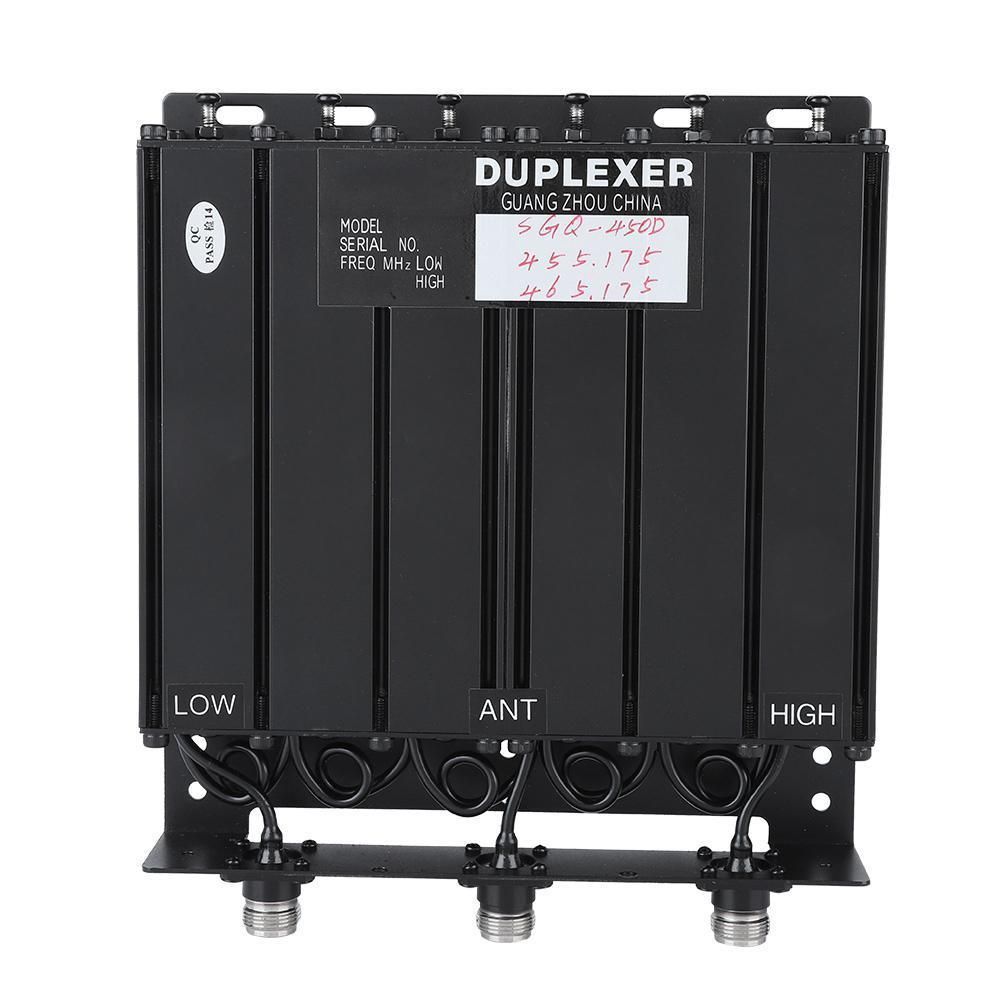Portable Repeater Project - Duplexers
A repeater is basically just a receiver with the audio output routed to the input of a transmitter. Whatever it receives (modulo things like CTCSS codes, etc.) is transmitted. If the receive and transmit frequencies are on different bands (say, on 2m and 70cm) the transmitter doesn’t interfere with the receiver and life is good. This is why many mobile dual-band FM radios can do cross-band repeat.
If the receive and transmit frequencies are on the same band, life gets more complicated. The problem in a nutshell is that the transmitter generates some spurious emissions, and those emissions tend to fall away as you look further way from the transmit frequency. And then to heap problems on us, the receiver does not have perfect selectivity, so that strong signals on a frequency close to the desired receive frequency will interfere with a signal exactly on the desired frequency - this is called ‘desense’. And then of course if you just ran 50w into the reciever, the magic smoke would escape, so you need some way to prevent that.
One way is to use separate transmit and receive antennas, and have the two antennas seperated enough that there’s enough isolation between transmitter and receiver. But two antennas is a pain in the butt, and the required separation can be pretty significant distances.
The conventional solution to this problem is to put filters (called ‘duplexers’) into the antenna circuit. Between the transmitter and the antenna, the filter(s) will notch out the receive frequency and notch out any spurious emissions on the receive frequency by a healthy margin (90-120 db is not atypical), and then between the antenna and the receiver the filters will notch out the transmit frequency, so that the magic smoke stays in the receiver input stage.
For repeater systems that will live in environments plagued by high levels of stray RF (like many mountaintop tower sites, which might well have very high power commercial transmitters operating as well as other repeaters operating on the same band) the duplexers will be even more sophisticated and include bandpass filters to exclude all the unwanted RF. This is why tower site repeaters have duplexing arrangements that are physically much larger (and, alas, more expensive).
One of the unfortunate things about duplexers is that this means that a duplexer must be tuned exactly for the transmit and receive frequency by physically adjusting the duplexer. To do that properly, you need a service monitor or a spectrum analyzer with a tracking generator, and it’s more of a half hour process than a 10 second process, so repeaters are generally not frequency agile
A repeater that isn’t intended to operate in such a hostile RF environment can get away with a much smaller duplexer. Happily for the Portable Repeater Project these ‘mobile’ duplexers are not only smaller, they’re less expensive.

The repeater frequency coordinator for my area is WWARA, and in addition to having repeater frequency pairs allocated to various repeaters, they have a number of what are called shared non-protected pairs, which are intended for temporary repeater use exactly like what I envision for the PRP. On the 70cm band, there are two such SNP’s: 440 MHz/445 MHz, and 443 MHz/448 MHz. Of course, with no coordination, you’ve no guaranteee that someone else won’t be also trying to use the pair, and because you can’t just retuned the duplexer instantly, you basically need a duplexer for each frequency pair you plan to use.
This brings me around to my point, which is that because I want a repeater than can operate on either of the two SNP’s for 70cm, I will need two duplexers, one tuned to one SNP and the other tuned to the other. Switching from one pair to the other will mean moving the coax jumpers connecting the transmitter and receiver to the duplexer from one duplexer to the other one, and moving the antenna feedline to the active duplexer.
Anyway, after much dithering I reluctantly ordered two duplexers off eBay, from a vendor in China. I’ve got them now; they seem well made but I’ve got no solid say to verify the tuning, so that’s a problem I’ll have to sort out soon.